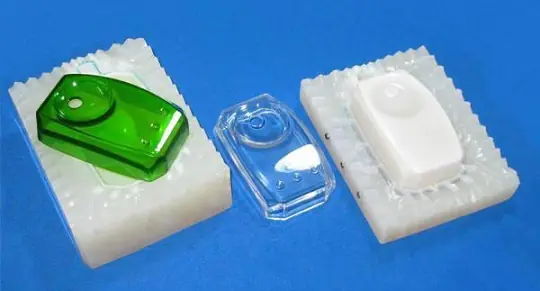Rapid prototyping has become increasingly popular in product development cycles. Because of the speed and relative affordability, rapid prototyping provides product designers and engineers with an excellent opportunity to quickly test concepts, improve ideas, and accelerate innovation.
Today, Firstpart uses 3D printing, CNC machining, and vacuum casting for rapid prototyping. But what drives our choice method? The project’s specificities, the design complexity, and the stage in the product development cycle. As all three methods have their unique advantages, this article will highlight the factors determining whether to choose CNC machining or vacuum casting when prototyping your products.
First, What is CNC machining?
CNC machining refers to computerized numerical control. It is an automated prototyping and production solution that makes functional end parts. It uses a set of programmed instructions set by a computer to direct cutting tools to remove material from a workpiece till the desired form has been attained.
CNC milling and turning are the most popular operations. The machine can work across 3, 4, or 5 axes, giving room for more precision, control, prototyping, and production accuracy.
Understand the vacuum casting process
The vacuum casting process is quite different from CNC machine operations. The process involves the use of 3D printing or a CNC machine to make a mold master pattern. The mold is then cured before plastic resins/elastomers are poured into the pattern to make copies of the master part.
Advantages of CNC machined prototypes
The key benefits of using CNC machining for rapid prototyping include:
i. High precision
ii. Low tooling cost
iii. Functional prototypes
iv. Complex geometries
v. Very good finishing quality
vi. Material range and diversity
vii. Ease of design modification
Advantages of vacuum casted prototypes
Vacuum casting is widely coveted for the excellent surface finish in the parts. Here are other advantages of vacuum casting and casted prototypes.
i. Excellent cosmetic finish
ii. Overall lower cost
iii. Shorter leadtimes
Drawing conclusions
· Speed
If you need to make quick prototypes that do not serve practical uses, vacuum casting is your best approach. The speed of vacuum casting trumps CNC machining. Once the master pattern has been made, the curing and casting process itself is shorter than CNC machine processes.
If the design is intricate and requires a functional prototype for testing and validation, you might be willing to compromise on the speed and choose CNC machine operations. CNC machines win on functionality.
· Materials
CNC machining can work with a wide range of materials, including plastic, metals, elastomers, wood, glass, ceramics, composites, and more. Vacuum casting, in contrast, is limited to plastic resins, polyurethane, and elastomers.
· Tolerances
CNC machine operations are capable of achieving the tightest level of tolerances. This makes them suitable for producing parts that will interface with other parts and require some level of fit. CNC parts are highly precise and accurate, with minimal deviations from specifications. Vacuum casting, on the other hand, can make parts with tight tolerances; however, these tolerances will not be as tight as CNC machined parts. Choose CNC machines for rapid prototyping operations where dimensions and tolerances are crucial to performance and functionality.
· Modifications
Once the master pattern has been produced, the copies to be created from it will bear the pattern’s geometry and size. If any changes are to be made, the master pattern will have to be remade. In contrast, the CNC machine uses a digital CAD file and no hard tooling. The consequence of this is that your prototype can be corrected or modified with simple corrections to the part design file and G-codes.
· Budget
Vacuum casting is generally more cost-effective than CNC machining when looking to make anything between 1-50 parts. The price per part of CNC machines is higher when you are not producing higher volumes. If you need 100+ prototypes, CNC machining may be more economical. Where your project is on a tight budget and simply needs prototypes for design validation or showcasing, vacuum casting is a clear cost winner.
· Purpose
CNC machining is preferred for applications that require detailed testing, pilot runs, and tight tolerances. For simple showcases, design validation, exhibitions, marketing, and non-functional end-uses, vacuum casting is more efficient and economical.
FirstPart CNC Machining in China
FirstPart is one of China’s leading manufacturing hub for Additive, CNC and Conventional manufacturing techniques. We boast of excellent in-house capacity, labor force and logistics while delivering exceptional value for money.
Our array of services include CNC machining, CNC turning, CNC milling, 3D printing, Rapid Tooling, Die casting, Rapid prototyping, Plastic Injection Molding, Urethane Casting, Aluminium Extrusion, Post-machining/Finishing services and much more.
As we understand the global challenges that is faced by new and existing businesses in these times of the Coronavirus, we offer product tooling, mass production, bridge tooling and low-volume prototyping/manufacturing with very flexible minimum order quantities (1 to 100,000). Our services are online, scalable and innovative, with a team of engineers and design experts available to support you through your entire product development cycle.










